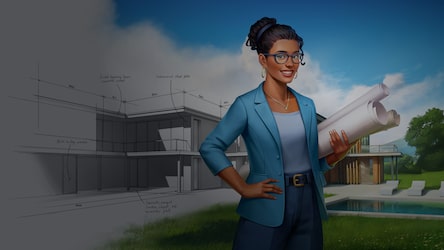Architect Advice on Optimizing Compact Urban Spaces
Architect Advice on Optimizing Compact Urban Spaces
Blog Article
Recognizing the Diverse Occupation Paths Available for Aspiring Architect
As an ambitious Architect, you have a world of occupation courses waiting for you. Whether you're drawn to conventional style or the subtleties of sustainable design, there's a niche that lines up with your passions.
Traditional Architecture: Designing Buildings and Structures
Typical architecture concentrates on developing buildings and frameworks that mix capability with visual allure. As you discover this area, you'll value the intricate balance between form and function. You'll find out to attract inspiration from historical styles, integrating aspects like symmetry, products, and workmanship. Your styles can show cultural heritage, showcasing neighborhood traditions while fulfilling contemporary needs.
You'll establish abilities in preparing, model-making, and site analysis, allowing you to picture and interact your ideas effectively. Engaging with customers, you'll need to understand their vision and convert it right into practical layouts.
Additionally, developing codes and sustainability methods are necessary in your work, ensuring your structures are secure and eco pleasant. As you grow in your job, you'll discover opportunities in domestic, business, and even remediation tasks, each offering one-of-a-kind difficulties. Embracing conventional architecture leads the way for a satisfying occupation that admires the past while shaping the future.
Urban Preparation: Forming Neighborhoods and Public Spaces
As a hopeful Architect, you can play an important duty as a metropolitan planner, changing how areas interact and operate. By employing area engagement approaches, you'll assure that residents have a voice in forming their atmosphere. Plus, integrating sustainable layout principles will aid create areas that not just fulfill today's requirements yet also secure the future.
Role of Urban Planners
While lots of may think of designers as the sole visionaries behind structures, urban planners play a necessary function in shaping the broader landscape of communities and public areas. By working together with different stakeholders, you'll assist design parks, transport systems, and property locations that promote social interaction and accessibility. Your competence in spatial design and neighborhood characteristics enables you to visualize future development while preserving cultural heritage.
Neighborhood Involvement Approaches
Efficient area engagement methods are important for city planners to ensure that the voices of citizens are listened to and valued in the preparation process. To promote purposeful discussion, you need to focus on open discussion forums and workshops where neighborhood participants can express their ideas and concerns. By proactively paying attention and including responses, you'll produce areas that reflect the community's needs, ultimately leading to even more effective and lasting urban atmospheres.
Sustainable Layout Principles
When designing urban rooms, including sustainable design concepts is important for producing atmospheres that thrive both environmentally and socially. Think about integrating green spaces, like yards and parks, to improve biodiversity and improve air top quality.
Designing with water preservation in mind is likewise essential-- think of rain yards and permeable surface areas to handle stormwater. Entailing neighborhood participants during the preparation process warranties that the areas you develop meet their demands and motivate social communication. By embracing these concepts, you'll add to dynamic, lasting urban landscapes that profit everyone.

Landscape Design: Producing Sustainable Exterior Atmospheres
As you check out landscape architecture, you'll uncover necessary design concepts that produce stunning and functional outdoor areas. Sustainable techniques play an essential duty in making certain these environments thrive while reducing environmental influence. Plus, you'll locate a range of profession possibilities that enable you to make an actual difference in exactly how people engage with nature.
Design Concepts in Landscape
Understanding style principles in landscape architecture is necessary for creating sustainable exterior environments that harmonize with nature. You'll need to contemplate components like percentage, equilibrium, and scale to guarantee your layouts really feel cohesive and inviting. Integrating indigenous plants not just enhances biodiversity however likewise reduces water usage, making your landscape durable. Think of the flow of room and how people engage with it; paths and seating locations must welcome exploration and relaxation. Furthermore, focus on seasonal modifications, designing with materials that complement the surroundings year-round (Architect). By focusing on sustainability and looks, you can create outdoor areas that enhance the neighborhood and advertise health. Embracing these principles will set a strong foundation for your career in landscape style.
Sustainable Practices Review
Lasting techniques in landscape architecture not just concentrate on aesthetics but likewise focus on ecological health and source conservation. You can design spaces that promote dirt wellness, such as making use of natural products and practicing permaculture principles. Eventually, these techniques guarantee your designs benefit both people and the environment for years to come.
Profession Opportunities Expedition
With a solid structure in lasting practices, landscape style offers a variety of profession paths that enable you to make a purposeful influence on the setting. You might work as a landscape developer, creating cosmetically pleasing and useful outside spaces, or concentrate on eco-friendly repair, aiding to restore broken environments. Urban organizers commonly team up with landscape engineers to develop green rooms in city setups, improving city livability. If you're passionate regarding education, consider coming to be a landscape design teacher, inspiring future generations. Additionally, you might function with nonprofits concentrated on ecological sustainability or take part in research to introduce brand-new methods. Each course not just shapes beautiful settings yet likewise promotes a much healthier planet for future generations.
Sustainable Layout: Focusing on Eco-Friendly Practices
As you explore your job in design, welcoming environment-friendly practices can establish you apart in an affordable area. Sustainable layout focuses on producing buildings that minimize ecological influence while enhancing passenger health. By integrating eco-friendly materials, energy-efficient systems, and lasting building methods, you'll add to a greener future.
Start by acquiring understanding of eco-friendly accreditations like LEED try this site or BREEAM, which can boost your credentials. Consider exactly how all-natural light, air flow, and thermal performance can optimize style. Team up with designers and environmental specialists to introduce solutions that lower waste and conserve resources.
Don't fail to remember the importance of neighborhood participation-- interesting neighborhood stakeholders can motivate designs that integrate with the environment. As clients increasingly prioritize sustainability, your competence in eco-friendly practices will not only attract projects yet also satisfy your passion for responsible architecture. Embrace this crucial aspect of the profession, and watch your career flourish.
Historical Conservation: Shielding and Recovering Social Heritage
While you begin on your architectural journey, think about the necessary function of historic preservation in maintaining our social heritage. This field focuses on the protection and reconstruction of substantial structures, sites, and structures that inform the tales of our past. By participating in historic conservation, you'll assist safeguard the architectural heritage that shapes area identification.
As a historic conservation Architect, you'll examine historic relevance and evaluate the problem of structures. You'll work very closely with historians and conservationists to ensure genuine repair techniques are used. This profession course allows you to mix creative thinking with research, allowing you to design options that respect initial materials and workmanship.
Your job not only adds to sustainability by recycling existing buildings but likewise cultivates a sense of pride within areas. Embracing this course will certainly help you come to be a guardian of background, preserving the tales and visual appeals that enrich our lives.
Inside Style: Enhancing Indoor Spaces
Historic conservation and interior architecture both share a dedication to enhancing the developed setting, however they concentrate on various elements. While historical preservation stresses keeping a structure's historic and cultural worth, indoor design nos in on maximizing interior spaces for performance and appearances.
As an ambitious Architect, you'll find that indoor style enables you to blend creative thinking with technological abilities. You'll make rooms that not only look good yet likewise advertise comfort hop over to these guys and performance. This field entails recognizing just how light, shade, and products interact within a room, impacting mood and functionality.
You'll function on different jobs, from residential homes to commercial offices, ensuring that each environment meets the needs of its owners. By focusing on customer experience, you can change interiors into inspiring and useful areas, making a considerable effect on exactly how individuals communicate with their surroundings. Welcome the possibility to improve indoor settings and form the means individuals function and live.
Industrial Style: Merging Functionality With Appearances
Commercial style plays a vital duty in developing products that perfectly mix appearances with performance, making certain that what you make use of everyday is not only aesthetically appealing yet likewise useful. As an aspiring Architect, you could involve on your own in this area, concentrating on designing every little thing from furniture to customer electronics. Your work entails comprehending customer requirements, materials, and making procedures, allowing you to develop ingenious solutions that enhance day-to-day experiences.
In industrial style, you'll frequently work together with online marketers, engineers, and producers, making certain that your styles are not only attractive however additionally practical. This job course supplies a vibrant atmosphere where creativity meets usefulness, making it a rewarding choice for engineers interested in shaping the products of tomorrow.
Regularly Asked Concerns
What Educational Accreditations Do I Need to Come To Be a Designer?
To become an engineer, you'll require a professional level in style, normally a Bachelor's or Master's. Additionally, you'll have to complete an internship and pass the Architect Enrollment Assessment to exercise legitimately.
Exist Qualification Needs for Various Architectural Career Paths?
Yes, there're accreditation requirements for numerous building paths. Architect. You'll need to pass exams, total internships, and occasionally go after specialized training, relying on your picked focus, like landscape architecture, urban design, or historic conservation
What Software Program Abilities Are Necessary for Engineers Today?

Just How Can I Gain Practical Experience While Examining Style?
You can get useful experience by interning at architectural firms, joining style competitors, offering for community jobs, or teaming up with schoolmates on real-world projects. These possibilities boost your abilities and build useful connections in the industry.
What Task Opportunities Exist Outdoors Typical Style Firms?
You can explore different work opportunities outside standard design companies, like metropolitan preparation, interior decoration, landscape design, building and construction administration, actual estate growth, learn this here now and even roles in sustainability consulting. Each offers one-of-a-kind obstacles and rewards.
Whether you're drawn to typical style or the nuances of lasting layout, there's a specific niche that aligns with your rate of interests.When making city rooms, integrating lasting style principles is essential for producing environments that thrive both ecologically and socially.As you discover landscape architecture, you'll find essential layout concepts that produce gorgeous and useful exterior spaces.Understanding layout concepts in landscape architecture is crucial for developing sustainable exterior environments that balance with nature.In industrial style, you'll often work together with online marketers, manufacturers, and designers, making sure that your designs are not only attractive yet likewise viable.
Report this page